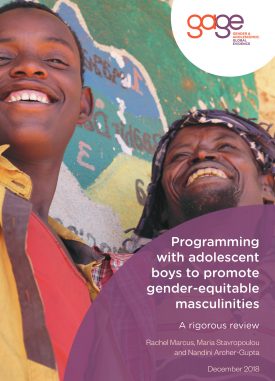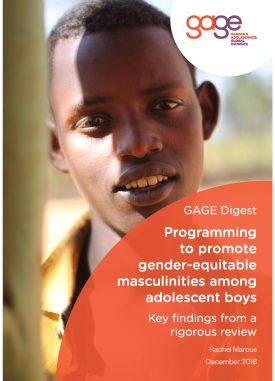Engaging boys and men in development and humanitarian interventions provides an important counterpoint for activities that seek to promote gender equality by addressing the needs and interests of women and girls only. The argument for such a collective approach can be made on the basis of established thinking that gender equality is achieved on the basis of a progressive interchange of social relations between girls, boys, women and men, as well as programme interventions that rely on the participation of men and boys in order to be efficient and effective. Furthermore, there are arguably three major foundational areas through which interventions focused on masculinities have gained traction. The first arises from the 2001 Declaration of Commitment on HIV/AIDS; the second is the 2013 Call for Action, promoted by the MenEngage Alliance for the post-2015 development agenda; the third is the Human Rights Council Resolution 35/10 (2017), which unpacks the importance of ‘Accelerating efforts to eliminate violence against women: engaging men and boys in preventing and responding to violence against all women and girls’.
This brief summarises research undertaken to determine the range of key players and policy opportunities in engaging men and boys in promoting gender equality. The mapping of associated stakeholders and policies provides guidance to researchers, policy-makers and practitioners seeking to engage on subject matter relating to the inclusion of men and boys in interventions aimed at gender equality and the empowerment of women and girls. The research findings show that there are gradual but noticeable shifts in global and national conversations on how best to engage men and boys over the past few decades. These shifts have been supported by the development of normative standards (particularly over the past 15 years) such as the Human Rights Council Resolution 35/10 (2017), and also the various standards mapped in this study, but also by a handful of influential actors who have driven the agenda at global and national levels.
Suggested citation
Walker, D., Engle, O. and Beckert, S. (2019) Positioning GAGE evidence on masculinities. A mapping of stakeholders and policies relating to the engagement of boys and men for gender equality. London: Gender and Adolescence: Global Evidence. (https://www.gage.odi.org/publication/positioning-gage-evidence-on-masculinites/)

